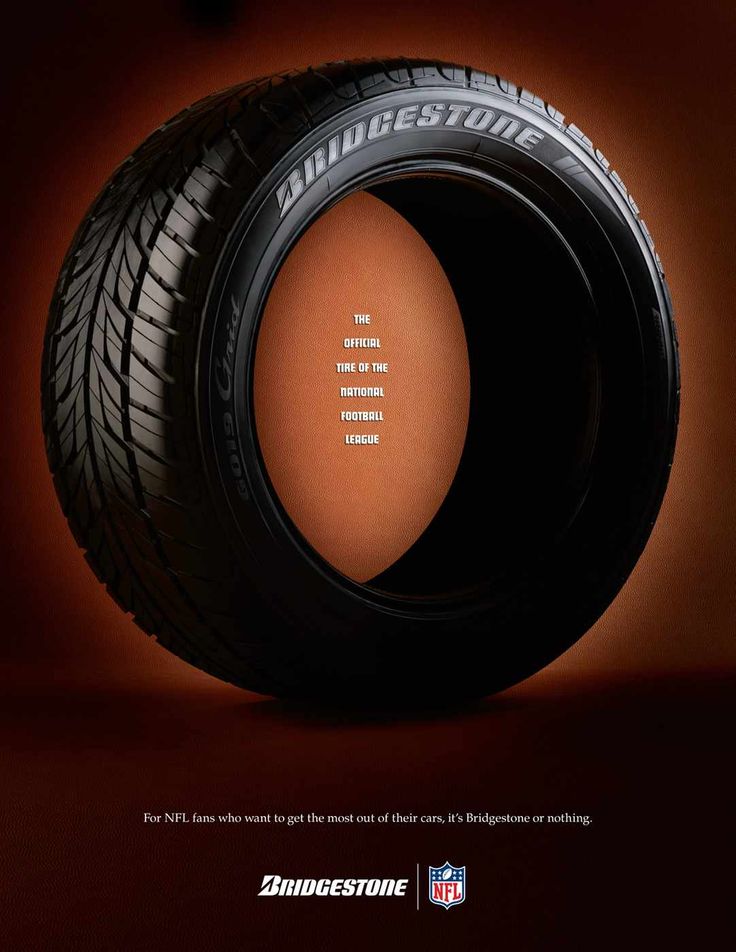It is the objective of Kenda Tire and Kenda Racing to form strategic, mutually beneficial relationships with every individual or organization we partner with. No sponsorship from Kenda is considered a donation or “free exposure” for our brand. Our goal is to develop partnerships to provide Kenda Tire with increased and specific exposure in identified motorsport events as well as in the media.
It is for this reason, and the fact that we receive many sponsorship requests, that we require you to present a formal written proposal which also includes a completed Sponsorship Application form in order to be considered for a Kenda Tire automotive/motorsport sponsorship. Your entire proposal (including our Sponsorship Application) must be emailed to us for review. Each completed sponsorship proposal will receive proper consideration but there is no guarantee that your application will be successful due to the limited partnerships we can offer.
TYPES OF KENDA TIRE AUTOMOTIVE SPONSORSHIPS
For 2021, we will offer four types of sponsor backing possibilities.
Event/Series Sponsorship - Kenda Tire will occasionally partner with select Drifting Series or Event Partners through a combination of financial or product-in-kind support.
This type of sponsorship will be rare, and will require a Drift Series or event, to be able to provide maximum quantifiable benefits to Kenda Tire including substantial media exposure to Kenda for your series or event.
Full in-kind Sponsorship - These will also be rare, as we seek to broaden our overall racing footprint and media exposure, and these opportunities are often limited as well
This would generally provide a fixed amount of product to the driver at no cost to the recipient. This will be set at a maximum product/monetary value as mutually agreed.
Full sponsorship consideration is only given to proposals with a good level of return for Kenda Tire media exposure and content deliverables in a targeted segment for our marketing objectives.
Partial in-kind Sponsorship - Kenda Tire will provide a very limited quantity of tires to the recipient who routinely performs in grassroots/pro-am level events, in return for professional social media content, Kenda graphics in on-car placement, AND who can demonstrate a winning history for themselves in their respective series/regions.
Racer Support Program (RSP) Sponsorship - Also aimed at the grassroots/pro-am drifting or autocross/HPDE driver, the RSP Sponsorship will allow the driver to obtain a fixed number of tires for their season at a heavily discounted price from an official Racer Support Program Distribution Partner, as a Contingency style racing program.
This also requires RSP drivers to place select Kenda Tires graphics on-car for the duration of the season; must run all four tires with Kenda Tires; and be able to demonstrate success and a winning history for themselves. Additional Program details will be shared if a RSP offer is presented.
KENDA PROMOTIONAL OBJECTIVES
Be aware that a sponsorship is a business agreement between a driver and Kenda Tire. In this agreement, the driver or series partner will receive specific financial and/or in-kind support in exchange for deliverables of media content, on-car branding, social media content generation.
The goal is for Kenda Tire to achieve specific marketing and promotional activity objectives, and to demonstrate the Kenda Tire philosophy of “Podium 2 Pavement” winning with our off-the-shelf products.
To this, a Kenda Tire Sponsorship requires our drivers and Series Partners to:
Be familiar with our products, product features and benefits including knowledge of our Company and full range of products Kenda produces. Be able to demonstrate your prior use of Kenda Tires and how they have helped you win.
Deliver on the agreement made to secure the sponsorship including promoting Kenda Tire through their social media, video/photo content, and on-car placement
Be a Brand Ambassador to represent Kenda Tire products. This includes actively promoting our company’s products in a knowledgeable manner and project Kenda’s brand values.
This includes actively promoting our company’s products in a knowledgeable manner and project Kenda’s brand values.
Conduct yourself responsibly and in a manner appropriate to being a representative of Kenda Tire, both at events and across social media.
Being willing to provide regular photos, videos, and written updates of your progress through the season to Kenda Tire. This could also include providing your vehicle to be available at select Kenda Tire dealer events or industry shows if needed.
Understand the value of this partnership. Have fun and mutually support each other.
OTHER THINGS TO CONSIDER
Kenda Tire is an emerging brand and we are interested in drivers who can use and endorse Kenda Tires not just while on track, but as a lifestyle brand as well. We offer premium level products at a ‘value’ price point. Being aware of the wide range of Kenda Tire products via our website, and demonstrating your past use of Kenda products where possible is favored.
Sponsorship is currently for USA based individuals/activities.
Every Sponsorship we offer for automotive is to help broaden Kenda’s exposure at activities that we may not be able to activate on site for. You will act often as a Kenda Tire Brand Ambassador while at your events, and your conduct should reflect that.
Sponsorships will be focused on selected marketing areas where Kenda Tire has determined additional market share and growth is needed. For this reason, we will generally not provide multiple in-kind sponsorships in the same region/series area. The RSP however, may allow for several drivers to compete in one region where the Contingency is run.
Please understand that we cannot lend support/ help everyone.
All sponsorship allocations are subject to normal budgetary considerations, and Kenda Tire does reserve the right to modify or postpone marketing activities/ sponsorships in cases of unforeseen events, similar to the 2020 Pandemic.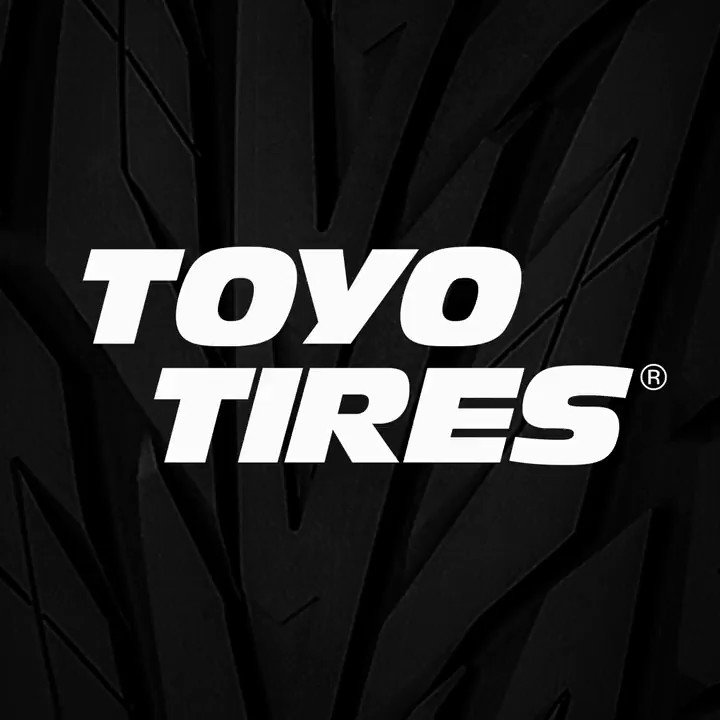
Lastly, please read and understand the above, and complete the Sponsorship Application below. NO consideration will be made for your incomplete applications, missed deadlines, or to Sponsorship requests, direct messages, mailed/emailed Sponsor Pitch Decks or Racer Proposals that do NOT also accompany the Sponsorship Application.
To apply, please download the application form here.
All applications should be mailed to [email protected].
Racing programs cost a lot of money. Sponsors can help support your program or elevate it to the next level. But, how do you go about getting a sponsor? We’ve talked with representatives throughout the industry and asked them to share positive experiences as well as some of their pet peeves.
Do’s Contacting a sponsor is like contacting a potential employer. Your true request is that you are asking to be part of the sponsor’s sales team. Keep this in mind with everything you do regarding sponsorship.
Contacting a sponsor is like contacting a potential employer. Your true request is that you are asking to be part of the sponsor’s sales team. Keep this in mind with everything you do regarding sponsorship. If however, the track is close, what could you do to bring them customers? A couple of ideas include handing out coupons at the track or making a personal appearance with the car at one of their facilities. These are the types of ideas to develop before making any first approach.
If however, the track is close, what could you do to bring them customers? A couple of ideas include handing out coupons at the track or making a personal appearance with the car at one of their facilities. These are the types of ideas to develop before making any first approach. In fact, we received so much feedback on this item that we will be publishing another article dedicated to this topic.
In fact, we received so much feedback on this item that we will be publishing another article dedicated to this topic.
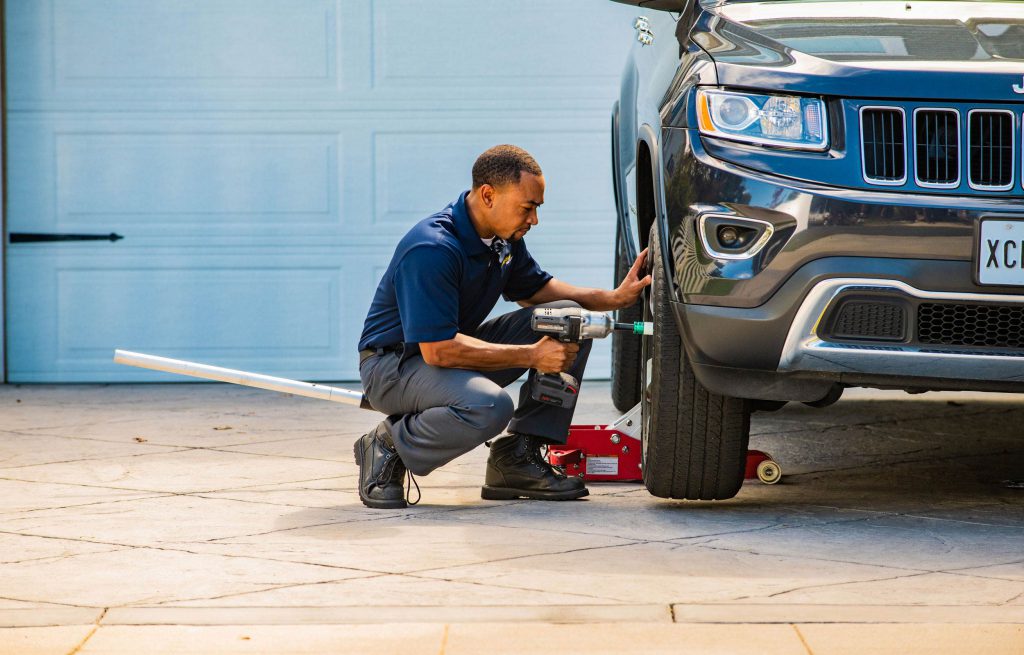 When a sponsor receives a message like, “your business' logo can go on the hood for $500!,” they just see it as an expensive sticker.
When a sponsor receives a message like, “your business' logo can go on the hood for $500!,” they just see it as an expensive sticker.  It’s even worse when a sponsor says no and the racer’s response is, “that’s why I told you it’s for charity.” With a response like that, you may as well say—“you’re a jerk!” And guess what? You will never get a sponsorship of any kind from that person.
It’s even worse when a sponsor says no and the racer’s response is, “that’s why I told you it’s for charity.” With a response like that, you may as well say—“you’re a jerk!” And guess what? You will never get a sponsorship of any kind from that person.While this list is not exhaustive, we hope it gives you some insight into the experiences sponsors have had and some tips to approach them in the best way possible.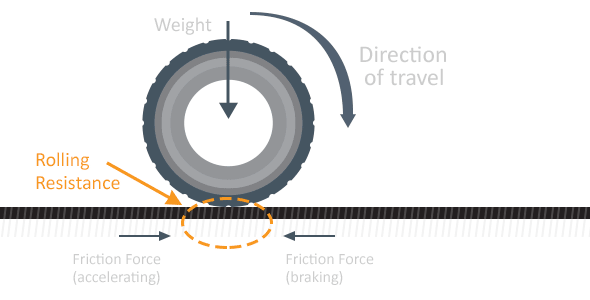 We truly wish you luck on your quest for sponsorship.
We truly wish you luck on your quest for sponsorship.
Sponsoring or acquiring the rights to own or directly associate your name with a product, person, organization, idea, team, league or event is the rising star of modern marketing, currently being evaluated in 51 billion dollars and annually increases its turnover by more than 4%. However, despite the exciting new opportunities that open up for this direction, digital marketers are still in no hurry to use it in their projects. Sponsorship continues to stand apart from digital marketing, despite the fact that today everything speaks in favor of combining these two directions. So what are the possibilities of using sponsorship and content marketing together?
To optimize sponsorship for the digital world, it is important to have a good understanding of how it can be turned into an effective marketing tool. Below is a quick guide to the psychology of sponsorship that looks at 7 key ways to successfully combine sponsorship and content marketing . They are based on the behaviorist theory of Kahneman about two systems of human thinking: fast (System 1) and slow (System 2).
They are based on the behaviorist theory of Kahneman about two systems of human thinking: fast (System 1) and slow (System 2).
The first and perhaps most important thing to know is that sponsorship is based more on associations than beliefs . The main idea is that a sponsored object (product, person, organization, territory, idea, team, league or event) that evokes strong positive emotions in consumers, as a rule, is the bearer of the so-called halo effect (perception of a person's personality through the prism of a preliminary information about him), which also begins to apply to his sponsor. Sometimes it is enough to emphasize just one positive character trait or ability of a person in order to contribute to the occurrence of the halo effect and thus influence the perception of others of all his other qualities. In other words, positive feedback about a sponsored property also automatically extends to its sponsor. As you understand, this phenomenon has nothing to do with logically constructed beliefs and is directly related to the emotional associations of a person.
If we try to explain this effect in simple terms from the behavioral point of view, then such emotional associations can be associated with the so-called conditional learning . Sponsorship brings together two Miami Heat and Kia incentives, where the positive perception (unconditional perception) of the first Miami Heat incentive (unconditional incentive) influences our perception of the second Kia incentive as a result of the association. Since we begin to perceive Kia and Miami Heat as a whole, our attitude towards the company is formed under the influence of a positive perception of the team associated with it and is conditional. Accordingly, the organization itself becomes a conditional stimulus. In practice, this manifests itself in the fact that every time we see or hear Kia, we think of Miami Heat.
From the point of view of modern psychology, emotional associations are the main element of the first system of human thinking - System 1 (System 2 - slow, conscious, logical; System 1 - fast, automatic, intuitive). Instead of thinking about what Kia is, we begin to associate it with various objects (things, times, places, ideas, etc.) that we already have a certain opinion about and intuitively infer about companies. By seeing Kia and Heat as one, we transfer our relationship from Heat to Kia and love the company because of the associations it evokes in us, not because we were convinced of it by some promotion. Moreover, now seeing the image of Heat on the Kia website or in the showroom of the store, in our brain activates the positive associations that the team evokes in us and this affects our behavior towards the sponsoring company.
Instead of thinking about what Kia is, we begin to associate it with various objects (things, times, places, ideas, etc.) that we already have a certain opinion about and intuitively infer about companies. By seeing Kia and Heat as one, we transfer our relationship from Heat to Kia and love the company because of the associations it evokes in us, not because we were convinced of it by some promotion. Moreover, now seeing the image of Heat on the Kia website or in the showroom of the store, in our brain activates the positive associations that the team evokes in us and this affects our behavior towards the sponsoring company.
The main idea of Nobel laureate Daniel Kahneman's theory of fast and slow human thought systems is that System 1, which operates on the basis of associations, dominates System 2 and has a much greater influence on our behavior than we would like. Well, is great news for those who are going to use or are already using sponsorship as a marketing tool .
If all of the above sounds too scientific for you, then let's try to consider this issue from a practical point of view. The essence of sponsorship is to create and activate associations. For online marketing, this means including sponsored properties in a company's digital designs, digital consumer experiences, and digital promotional materials. Just as in the case when watching older people we ourselves begin to behave like older people (the so-called Florida effect), as a result of associative priming, when we see Maiami Heat in the context of Kia, we begin to transfer thoughts and feelings to Kia , which we experience in relation to the Miami Heat.
II) Based on the fact that sponsorship works through associative learning and priming, 7 psychological mechanisms have been deduced that can be used to combine the possibilities of content marketing and sponsorship and influence people's behavior.
The things we see more often start to like us more. By associating a company with some socially significant object, we begin to perceive it more positively, since in our System 1 this sponsored object is the bearer of an attractive image. At its core, sponsorship is a numbers game (although excessive promotions, high rankings, and visibility can sometimes cause a backlash). The point is not to create an impression, but to increase the number of impressions - exploiting the logo and name in any available place and any possible time, including online time.
By associating a company with some socially significant object, we begin to perceive it more positively, since in our System 1 this sponsored object is the bearer of an attractive image. At its core, sponsorship is a numbers game (although excessive promotions, high rankings, and visibility can sometimes cause a backlash). The point is not to create an impression, but to increase the number of impressions - exploiting the logo and name in any available place and any possible time, including online time.
Digital content can increase the effectiveness of sponsorship by organizing keyword search advertising campaigns that will increase the number of views by drawing a clear parallel between the sponsor and the sponsored object. In addition to associating the name of a commercial organization with a sponsored object, it is also necessary to use this object as often as possible in its digital projects (in advertising, applications, websites).
The transfer of emotions and feelings [excitement, interest, positive perception] from the sponsored object to its sponsor . The associations that determine how our System 1 will perceive a sponsor are completely copied from the most characteristic associations that we have already formed in relation to the sponsored object.
The associations that determine how our System 1 will perceive a sponsor are completely copied from the most characteristic associations that we have already formed in relation to the sponsored object.
Digital content can drive sponsorship effectiveness by focusing more on eliciting emotional rather than rational consumer responses, especially those that are most desired by the sponsor. A prime example is an emotional YouTube video of Clippers basketball player Blake Griffin jumping over a Kia sponsor's car. The video won the 2011 NBA Dunk Contest and also earned respect and reverence from viewers.
Transfer of imaginative associations [characteristics, individual characteristics] from the sponsored object to the sponsor. When a company sponsors, the image of the sponsored entity (for example, cricket and the traditional English associations it evokes) can affect our System 1 and our perception of the image of the sponsor (for example, the Gillete company sponsoring the Gilette Cup). A prime example: Iveco, a manufacturer of road trains, sponsored heavyweight boxing competitions to embody the image of toughness and strength associated with the sport.
A prime example: Iveco, a manufacturer of road trains, sponsored heavyweight boxing competitions to embody the image of toughness and strength associated with the sport.
Digital content can increase sponsorship effectiveness by focusing more on the specific imagery that the company would like to borrow from the sponsored property. For example, you can use words and images associated with target images in the process of activating the relationship between the sponsor and the sponsored property, as well as between the sponsored property and the sponsor's digital projects (for example, Gllette's Fantasy League website). Following this ethos, American Express linked its image to the US Open by recording the Art of the Dispute video featuring John McEnroe to promote its dispute resolution services.
Often we think something is right for us simply because it is related to the same thing we are connected to.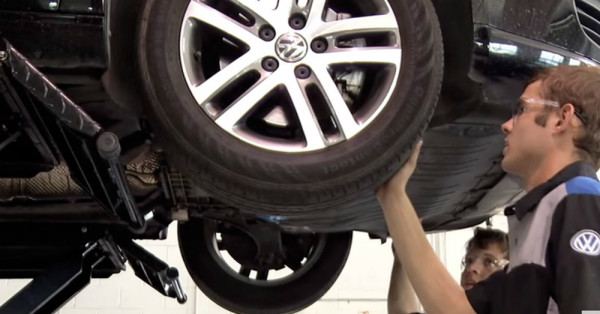 Ownership associations occur when a company sponsors an entity that is meaningful to a particular group of people, thus making them feel like it is "their brand". For example, if I feel like I belong to the Miami Heat club and American Airlines positions itself as a company that is also related to this club, then I will a priori perceive American Airline as the ideal airline for me.
Ownership associations occur when a company sponsors an entity that is meaningful to a particular group of people, thus making them feel like it is "their brand". For example, if I feel like I belong to the Miami Heat club and American Airlines positions itself as a company that is also related to this club, then I will a priori perceive American Airline as the ideal airline for me.
Another way digital content can improve sponsorship effectiveness is by strengthening the relationship between the sponsored entity and the sponsor. For example, you can periodically mention the brand in social media news feeds of famous people (for example, as Sprite did in the Instagram feed of American professional basketball player LeBron James). Deutsche Telekom strengthened their connection with Bayern Munich by placing a link to their website on the team's official page. Pepsi and other MLB sponsors have strengthened their affiliation with the League by sponsoring its online MLB Fan Cave.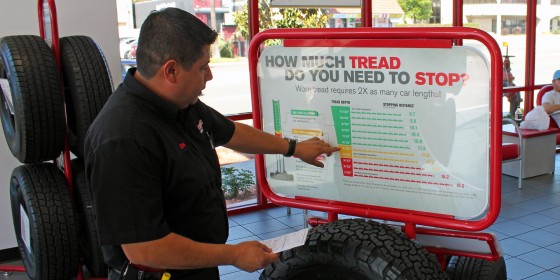 EA Game set a brilliant example of digital activation by developing a video featuring Tiger Woods that introduces Tiger Woods PGA Tour 08's new feature that allows the player to walk on water. The video received over 11 million views and created a strong association between the company and the famous athlete.
EA Game set a brilliant example of digital activation by developing a video featuring Tiger Woods that introduces Tiger Woods PGA Tour 08's new feature that allows the player to walk on water. The video received over 11 million views and created a strong association between the company and the famous athlete.
We often assume that if a company is sponsoring a big project, it is also a big business. By associating itself with a major event, a big team, a league or a star, the sponsor makes System 1 of its customers think that it is itself a significant commercial organization, and therefore a stable, financially stable and well-known company whose products and services are of very high quality. Just as a peacock's tail testifies to its ability, financial support for large-scale projects speaks to the appropriate size and professional level of the company. Such associations can be useful for organizations that are looking for ways to make consumers perceive themselves as large and influential representatives of their industry.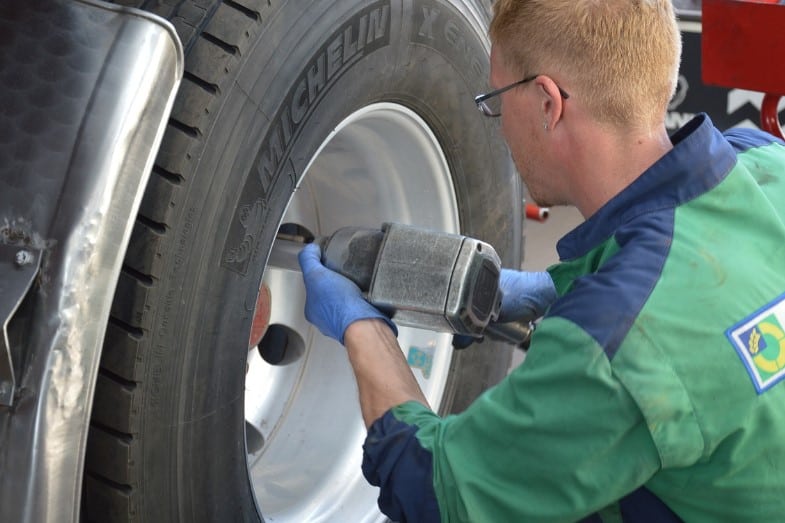 For example, when MRF, India's leading tire manufacturer, invested its entire monthly marketing budget in the Cricket World Cup, the organization's perception of being a large and financially healthy corporation increased by 19%..7% and 24.6% respectively.
For example, when MRF, India's leading tire manufacturer, invested its entire monthly marketing budget in the Cricket World Cup, the organization's perception of being a large and financially healthy corporation increased by 19%..7% and 24.6% respectively.
Digital content will increase the effectiveness of large sponsorship deals if online activation focuses on the size, sustainability and professionalism of the sponsor. For example, Nestle made the world aware of its sponsorship of version 4.4 of the popular Android mobile operating system (with the right to use the name for its Kit Kat confectionery brand) with an Apple-Esque video promoting the amazing quality of the Kit Kat candy bar.
Very often we assume that a company is a reliable organization if it sponsors a certain project, because otherwise it would not be allowed to do so . While in reality a sponsor is not always vetted and approved by the sponsored facility, our System 1 ensures that all sponsors are vetted for quality and professionalism in order to qualify for financial support. The very fact that Visa and Lloyds Bank was allowed to sponsor the 2012 Olympic Games testifies in our eyes to the reliability and good reputation of the bank despite the global financial crisis.
The very fact that Visa and Lloyds Bank was allowed to sponsor the 2012 Olympic Games testifies in our eyes to the reliability and good reputation of the bank despite the global financial crisis.
Digital content can help improve sponsorship effectiveness by highlighting the credibility of the sponsoring organization. For example, Subway used an association (athletes, snow, skis) with a major and credible event like the 2014 Sochi Olympics to promote its products. Even without being an official sponsor of the Games, she managed to become the fourth most popular brand that consumers associated with this sporting event.
We very often feel that if a company sponsors a property we care about, then we should also care for that company. If you've ever felt guilty about not sending back a greeting card, you'll understand how powerful reciprocity can be. Reciprocity is deeply embedded in the psychology of our System 1.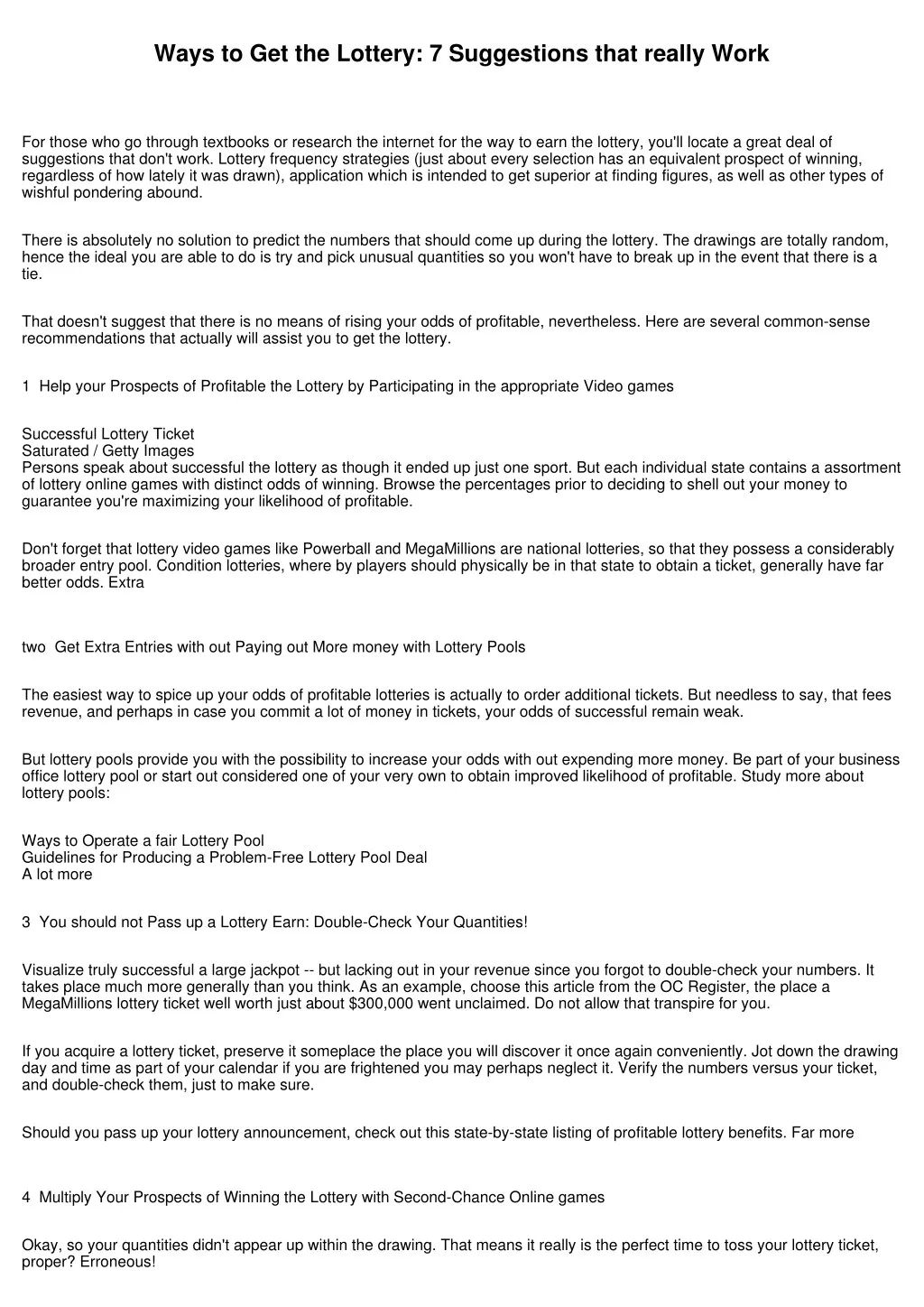 Therefore, when we receive something from someone, we automatically want to do him a favor in return. Sponsorship very often uses this strong mental incentive, when companies provide financial support for objects that their target audience cares about, thus creating a sense of duty among consumers. In our view, such enterprises become generous and disinterested helpers, and we intuitively want to support them as a token of gratitude. For example, 48% of NASCAR fans said they almost always purchase an Association sponsor's product, even though there are cheaper competitor products available.
Therefore, when we receive something from someone, we automatically want to do him a favor in return. Sponsorship very often uses this strong mental incentive, when companies provide financial support for objects that their target audience cares about, thus creating a sense of duty among consumers. In our view, such enterprises become generous and disinterested helpers, and we intuitively want to support them as a token of gratitude. For example, 48% of NASCAR fans said they almost always purchase an Association sponsor's product, even though there are cheaper competitor products available.
Digital content can increase the effectiveness of sponsorships by putting more emphasis on what a company has to offer rather than what it wants to receive. For example, mobile operator O2 provides its users with the opportunity to use a special application to purchase tickets for events taking place at the O2 Arena in London, out of turn. Later, consumers are also invited to use the VIP areas of the arena, such as the lounge or bar.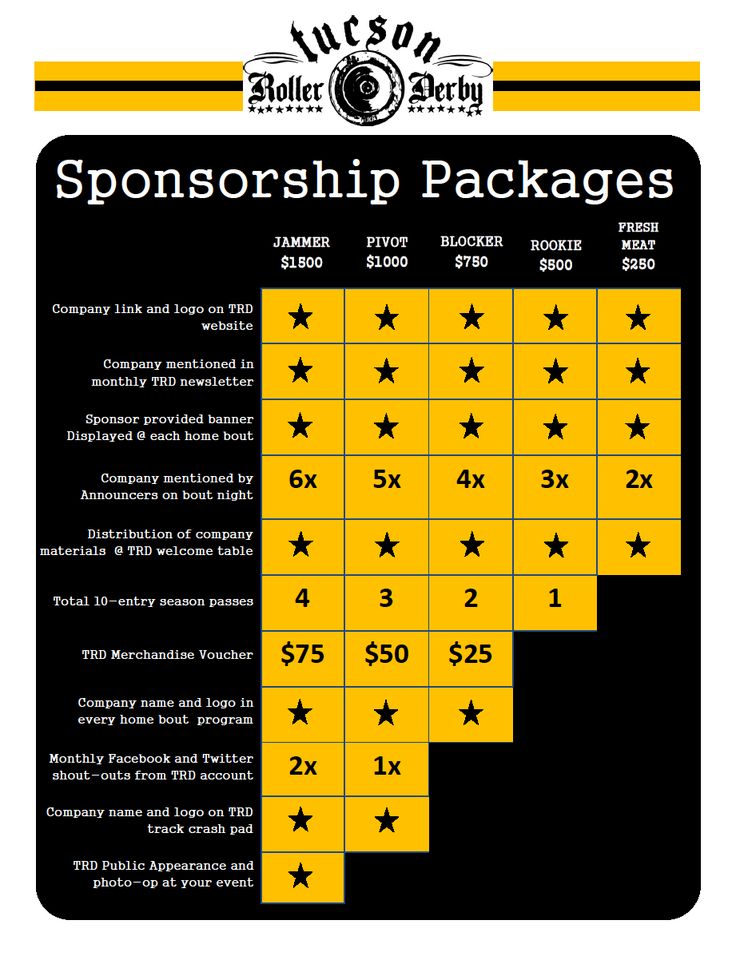 Similarly, Kia is using NBA sponsorship for its Drive for Five digital advertising campaign. The Corporation gives everyone who has bought or leased its car 5 double tickets to the Association's home matches. In Orlando, the company managed to sell 300 cars this way.
Similarly, Kia is using NBA sponsorship for its Drive for Five digital advertising campaign. The Corporation gives everyone who has bought or leased its car 5 double tickets to the Association's home matches. In Orlando, the company managed to sell 300 cars this way.
Moreover, by choosing a psychologically based approach to sponsorship, you save yourself from deceptive fantasies about this marketing direction, such as the idea that the effectiveness of a sponsorship deal depends entirely on storytelling. From a psychological point of view, this theory is fundamentally wrong. A star or a story, of course, can be the object of sponsorship, but in no case the sponsoring company itself, since it is the sponsored object that must attract the attention of the target audience and evoke emotions. By focusing on the sponsored object, people have very limited opportunities for deep cognitive exploration of the situation, and any attempt to shift the focus of attention can backfire. This means, first of all, that0003 Sponsorship works so smoothly and effectively precisely because it has nothing to do with storytelling. Storytelling requires conscious thinking, which can act as a distraction and expose the true goals of the sponsor's advertising campaign, thereby reducing its effectiveness. From a psychological point of view, the effectiveness of sponsorship lies precisely in remaining invisible. And in this sense, it would be correct to even perceive its impact on the audience as a sublimated influence that has nothing to do with the impact that storytelling has.
From a psychological point of view, this theory is fundamentally wrong. A star or a story, of course, can be the object of sponsorship, but in no case the sponsoring company itself, since it is the sponsored object that must attract the attention of the target audience and evoke emotions. By focusing on the sponsored object, people have very limited opportunities for deep cognitive exploration of the situation, and any attempt to shift the focus of attention can backfire. This means, first of all, that0003 Sponsorship works so smoothly and effectively precisely because it has nothing to do with storytelling. Storytelling requires conscious thinking, which can act as a distraction and expose the true goals of the sponsor's advertising campaign, thereby reducing its effectiveness. From a psychological point of view, the effectiveness of sponsorship lies precisely in remaining invisible. And in this sense, it would be correct to even perceive its impact on the audience as a sublimated influence that has nothing to do with the impact that storytelling has. 0138 . In the same case, if sponsorship has crossed the border of conscious perception, the sponsoring company should focus on all support of the sponsored object, and not on competition with it. A very good example of organizing this kind of project is the O2 application - shopping experience software product, which allows you to reduce waiting times, get better seats and better service.
0138 . In the same case, if sponsorship has crossed the border of conscious perception, the sponsoring company should focus on all support of the sponsored object, and not on competition with it. A very good example of organizing this kind of project is the O2 application - shopping experience software product, which allows you to reduce waiting times, get better seats and better service.
With all of the above in mind, let's briefly summarize seven ways to improve the effectiveness of marketing campaigns through the combination of content marketing and sponsorship from a psychological point of view.

| Item | ← Support | Sponsor |
| ← Service fee | ||
| Right to use object name → | ||
| Support → |
Target Needs: Money, support for brand development, limited sponsorship involvement in company affairs
Sponsor Needs: Out-of-the-box solution, positive perception transfer, mutually beneficial marketing partnership.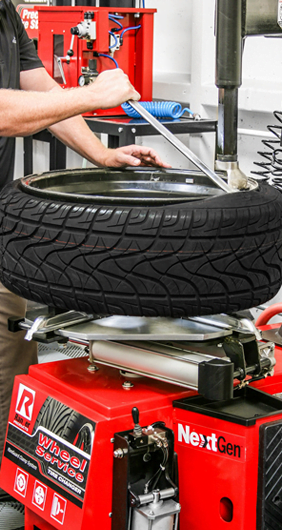
Author Anna Shakhovskaya
Products (techniques, novelties) appear due to projects. Many people think that for projects it is enough to use the tools of a project manager and everything will work out. But we should not forget about the role of interested parties (stakeholders), especially the sponsor and accelerators. Let's burn about it. And at the end of this material, readers will find a selection of current accelerators for 2022.
So, the project must have a sponsor. This is a kind of "patron" from the high echelons of the leadership of the organization, the state, the client. In general, from the system that the project will affect. And this is the very “heavy artillery” for the project manager, which solves the serious problems of the project in terms of all organizational problems, “putting in place” influential enemies of the plan or the project manager.
Without a sponsor, projects don't just "fly badly" - they often don't take off at all, especially in terms of obtaining business benefits. This is critical for projects for the transformation of socio-economic systems, even if these projects look like engineering and technical ones. For example, the Red Book project (EGSVTS, OGAS - the project of our Soviet Internet) never took off.
This is critical for projects for the transformation of socio-economic systems, even if these projects look like engineering and technical ones. For example, the Red Book project (EGSVTS, OGAS - the project of our Soviet Internet) never took off.
For the Soviet Union, which relatively easily implemented the nuclear and space programs, to introduce the "Red Book" - from a technical point of view, a less complicated project - turned out to be an overwhelming task. Because it was a project for the transformation of the socio-economic system - it affected industry, and trade, and planning bodies, and the sphere of administration, and the Politburo. Including the reason for the failure was the lack of a sponsor.
Of course, there were many reasons at once: the information "help" of Western partners to paralyze the project, the position of the military, and party and ministerial functionaries did not like this idea either.
Glushkov himself said more than once that Korolev (the space program) and Kurchatov (the nuclear program) had a curator from the Politburo (according to the project, this is the sponsor).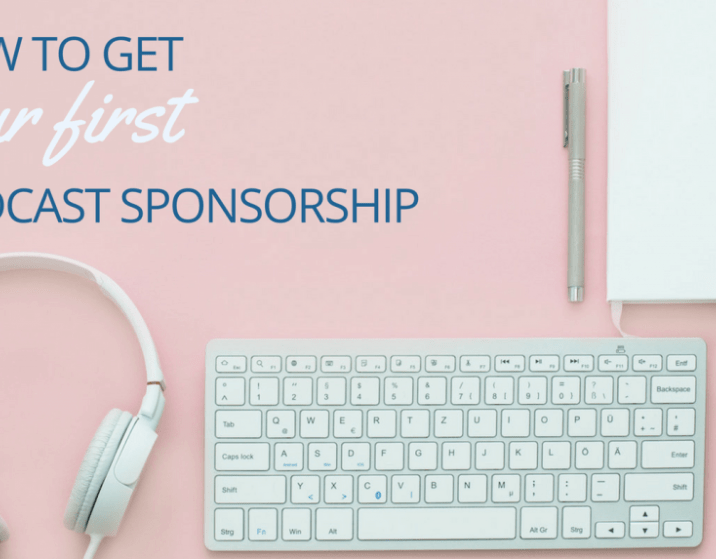 They could come to him and immediately resolve any issue. The trouble was that in our work there was no such person.
They could come to him and immediately resolve any issue. The trouble was that in our work there was no such person.
Let's move on to the sponsor's role in the project. The sponsor helps and ensures that the decisions needed by the project are made, which are beyond the authority of the project manager and the project team. It is the active participation of the Sponsor that supports both the project manager and the project team, and largely determines the results of the project. The sponsor connects the project team to the organization's strategy and "politics" and to the overall picture of what is happening at the level of the top management of the organization (the political power of the company).
The sponsor performs, in particular, the following functions and roles (based on PMBoK 7 - Project Management Body of Knowledge. Body of knowledge on project management):


If you have thoughtfully read each function, then you understand how important and valuable the role of the sponsor in the project. This is exactly the one who is interested in obtaining the final business benefits and value from the project. He "lives" the project no less than the project team. Often engaged in this project even before a project manager is appointed and a project team is formed. Moreover, it provides the expected benefits from using the results of the project, when the project itself has long been closed and the team has been disbanded.
In general, the position of the sponsor allows him to provide key support to the project team in 6 areas (PMBoK 7) and in accepting this role, the Sponsor must understand the minimum that he imposes on himself and undertakes to provide.
Both the features and the 6 areas are what a project manager and project team can safely expect from a sponsor.
In the course of the project, for yourself to understand how their sponsor generally performs these functions.Sometimes a sponsor has to be forced to do this through soft power.
I think you understood that the absence of a sponsor from the project will affect the efficiency: the project team will face a series of problems and failures, up to the complete paralysis of work.
For example, the terms for making decisions on issues and problems outside the authority of the project team are catastrophically lengthening. “Corporate football” begins, throwing problems in high offices (“and who will do this?”). If there is also a problem in the conflicting priorities of different stakeholders sitting in these same offices, the decision "will either get bogged down or will be delayed and hushed up."
There will be problems with obtaining resources and funding for purchases - the "operational problems" of the company will be a priority for "yesterday", and the project may start to be supplied "on a residual basis".
Or, in general, profile managers from the project team will begin to take people back to operational work, otherwise they “settle down there and it’s unclear what they are doing.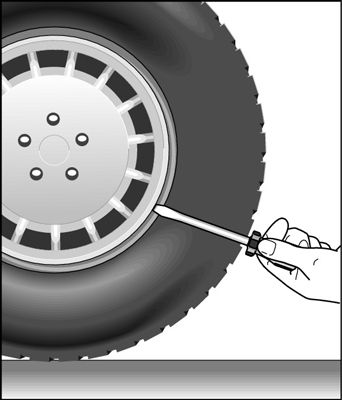 ” And not only profile managers - other project managers who have a normal sponsor. After all, they can also compete for these labor resources - and of course, the sponsor will easily resolve issues in their favor.
” And not only profile managers - other project managers who have a normal sponsor. After all, they can also compete for these labor resources - and of course, the sponsor will easily resolve issues in their favor.
And there are a whole lot of such "or" ones. So now you know what you can expect from a sponsor, how he can help you and what benefits you can get from him. If you yourself will be a sponsor of a project, now you know what kind of burden you are taking on.
But in addition to individual sponsors, there are organizations that help to quickly increase profits and help with the project not only with investments and a kind word, but also with strategy, advertising, team and training. At its core, this is an intensive training program for the entrepreneur and his team. The goal is to help a company, usually a young one, enter a new market, increase sales and revenue by several times. Training lasts from a couple of weeks to several months. Some accelerators give startups seed (seed) investments in exchange for a stake in the company. For example, the American Y Combinator invests $125,000 for 7% of the company.
For example, the American Y Combinator invests $125,000 for 7% of the company.
Most often, accelerators cooperate with startups, but there are those who work not only with beginners.
Y Combinator is considered the first accelerator in the world. It was launched by Paul Graham, an American entrepreneur and programmer, in 2005. The business has existed for 16 years and dozens of businessmen have been trained there, including the founders of Airbnb, a platform for finding and placing accommodation, Dropbox, etc.
)
The AddVenture fund, founded in 2008, is called Russia's first accelerator. He helped launch the InSales software developer, the AlterGeo service for finding vacation spots or friends by geolocation, and the HomeMe online furniture and home goods hypermarket.
Below is a list of Russian accelerators and ways to join their programs, all of which are free.
A Russian IT company has founded a hub for the development of new projects.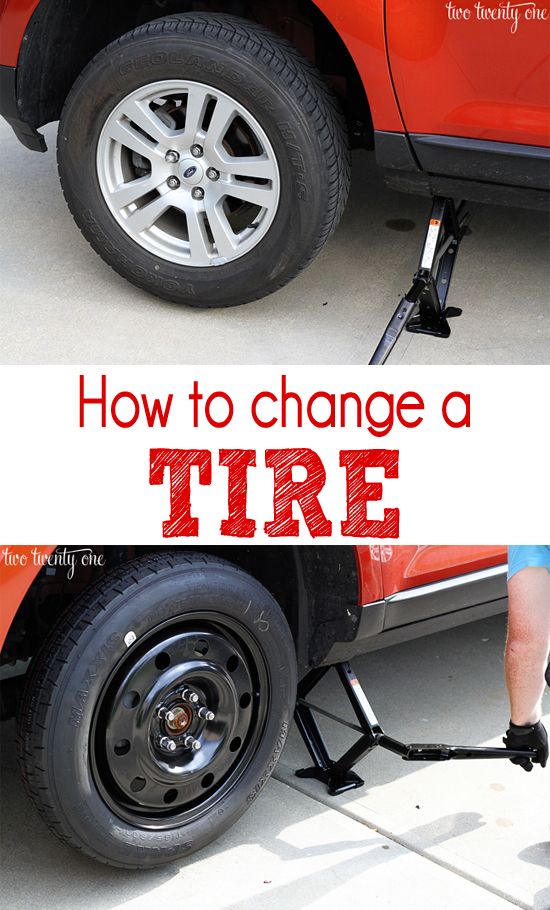 The hub was founded by Timeweb founders Alexander Boykov and Dmitry Tarasov. The company is ready to invest up to $1,000,000 in the projects you like and offer infrastructure and expert support.
The hub was founded by Timeweb founders Alexander Boykov and Dmitry Tarasov. The company is ready to invest up to $1,000,000 in the projects you like and offer infrastructure and expert support.
Anyone can submit an application, only a presentation of the project is required. Those who pass the selection will be able to receive not only funding, but also full support, including a development and marketing team, legal and accounting assistance.
Timeweb will share its experience and knowledge gained in the development and promotion of IT products over the past 15 years, including experience working with startups from Silicon Valley. That is why it will be easy and fast for projects to develop their product under the wing of a big brother.
Projects such as Craftum, MyReviews.dev, BotHelp and Hostman.com have already received investments.
You can apply for investments on the Hub website.
The accelerator was launched in 2018 by the Russian bank Sber and the American venture fund 500 Startups. IT startups from seven countries can take part in the program: Russia, Latvia, Lithuania, Estonia, Israel, Kazakhstan and Belarus. The company must have a minimum working product, customers and sales, that is, a startup at the idea stage will not work.
IT startups from seven countries can take part in the program: Russia, Latvia, Lithuania, Estonia, Israel, Kazakhstan and Belarus. The company must have a minimum working product, customers and sales, that is, a startup at the idea stage will not work.
Training takes place in two stages. The first is called bootcamp. This is a series of two-week online intensives run by Silicon Valley residents. Two streams of students are recruited here - 250 startups each.
Based on the results of two bootcamps, 25–30 startups go to the main acceleration program. It lasts eight weeks and consists of lectures, team workshops and individual meetings with mentors - founders of startups or specialists from Google, Microsoft, eBay and other international IT companies.
In 2019, the program was attended by Pavel Chernov, founder of the Wibedo HR platform. Thanks to acceleration, he launched the service in two weeks instead of the predicted five months.
The Sprint accelerator was launched in 2021 by the Internet Initiatives Development Fund (IIDF) and the Ministry of Digital Development. It is intended for video services, gaming startups and other IT companies focused on the Russian market. The organizers may consider an applicant with a Russian legal entity, a finished product or its prototype. A startup team must consist of at least two people.
It is intended for video services, gaming startups and other IT companies focused on the Russian market. The organizers may consider an applicant with a Russian legal entity, a finished product or its prototype. A startup team must consist of at least two people.
The accelerator lasts ten weeks and consists of two parts: thematic module and tracking. The thematic module includes individual and group sessions with IIDF experts on product development, team management, marketing, and fundraising. In parallel, each team meets with a tracker - a curator with experience in running a similar business. It helps to assess the state of the company and set goals for its development.
The Ministry of Digital Development subsidizes the program, so it is free for participants. Intellectual rights to the products will remain with the developers. It is planned that by 2024 more than 400 companies will become graduates of the program.
You can apply on the IIDF website. To do this, you need to fill out a questionnaire, tell about the product, team, promotion plans and collect a package of documents, including a tax certificate and an extract from the Unified State Register of Legal Entities.
Sprint was launched only this summer, the first stream is still being trained.
The Skolkovo Foundation has been running corporate accelerators — commissioned by partners — since 2018. The first one was held together with the biopharmaceutical company AstraZeneca for medical projects. In 2020, the fund organized a series of joint accelerators with large Russian companies: Rosselkhozbank, Magnit retailer, I-Teco innovation center and others.
Program topics vary and depend on partner requests. For example, Russian Post is recruiting startups from two areas: logistics and e-commerce. Each participating company is given 500,000 ₽. With this money, teams launch and test their products, after which they present them. The top five receive another 500,000 ₽ each.
To get into the accelerator, you need to find a suitable program on the website of the Skolkovo Foundation and submit an application.
The first Russian Post accelerator was held in 2020. Ten startups participated in it, including GeoAlert mapping platform, Insurion package insurance service and others. Four finalists became official partners of the company.
The Russian venture company held the first GenerationS accelerator in 2013. The program helps startups find customers among large corporations and attract investments. Now GenerationS has a dozen partners. Among them are the Dutch aircraft manufacturer Airbus, the French tire manufacturer Michelin, the Italian energy company Enel and the Russian hypermarket chain Lenta.
The requirements for accelerator participants and the duration of the program are determined by the partners. For example, in 2019The program was run by Michelin. For three weeks, the company gathered startups that developed technologies for truck drivers, services for diagnosing a driver’s condition or assessing risks on the road.